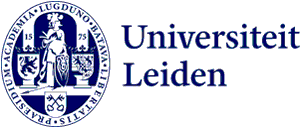
ERC Consolidator Grant for Marijn van Putten: How many ways are there to read the Quran?
How should the Quran be read? The manuscript of this holy book makes different interpretations possible. Researcher Marijn van Putten has been awarded an ERC Consolidator Grant of two million euros to explore centuries-old recitations.

‘The text of the Quran was standardised in around 650, a few years after the death of the prophet Mohammed. The manuscript that was used can be interpreted in quite a lot of different ways,’ Van Putten explains. In Arabic script, it’s difficult to distinguish between a lot of consonants and vowels weren’t written at all. As a result, the text can be read very differently in a lot of places.’
Standardisation and variation
It was not until the tenth century, three hundred years after the source text was standardised, that the different interpretations were also standardised. Scholar Ibn Mujahid established seven readings that are still considered canonical today. ‘Ibn Mujahid’s book is the earliest text we have that describes the reading traditions,’ Van Putten says. ‘ That’s why we know very little about the interpretation of the Quran in the first centuries of Islam. Was there a mishmash of interpretations and did Ibn Mujahid aim to eliminate that, or were these seven readings already very popular?’
All these centuries later, van Putten believes, it is still quite possible to find out. ‘Very early on, long before Ibn Mujahid, Arabic writers developed a system to indicate vowels and differences in consonants. They wrote them in a different colour in the text of the Quran, often with red dots. We can examine hundreds of these kinds of manuscripts to learn more about the early interpretations of the Quran.’
By comparing the texts that were added later with the standardised basic text, Van Putten and his team want to trace how the interpretation of the Quran has developed. Will we find clusters in the reading traditions? Were some interpretations more popular than others? And why did the reading traditions change?
Mature field
These questions are certain to arouse interest among some of Van Putten’s 20,000 Twitter followers. ‘Recitation is often regarded as the core of the Quran. Every Muslim has to be able to recite at least a small part of the Quran correctly, so there are many Muslims who will find this interesting. I like the fact that this is something that really matters.’
Van Putten also hopes that the ERC grant will help focus more attention on his second field of research. ‘It is only in recent years that questions about the history of the reading traditions have been taken seriously based on manuscripts, and this project will be the first major study to explore the questions raised by this material. These manuscripts have been accessible for hundreds of years but nobody has looked at what kind of information you can glean from them. I’m looking forward to the field becoming mature, that people think: we need to look at this to understand the Quran.’
